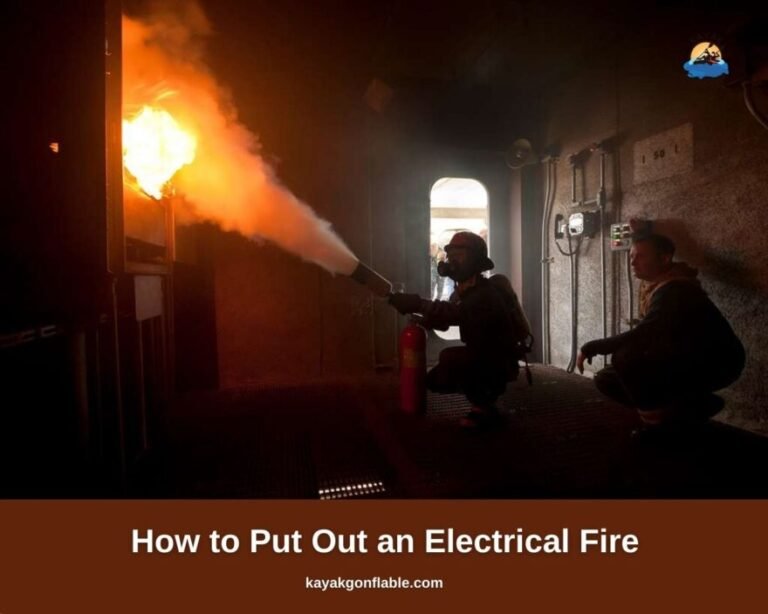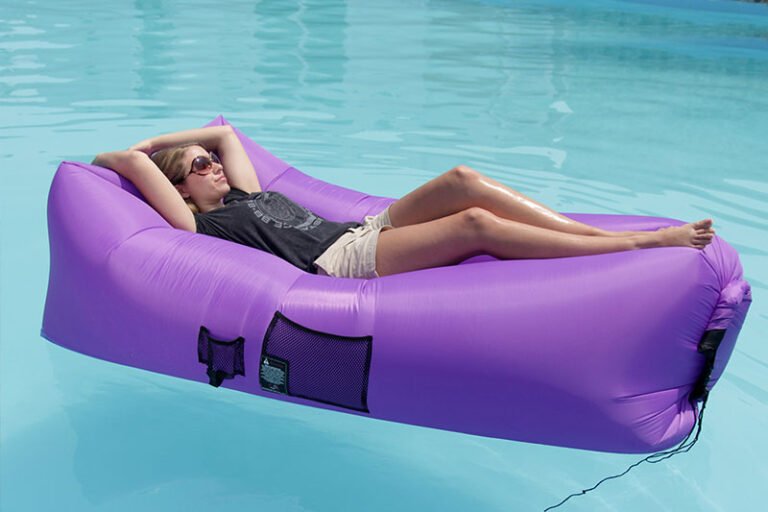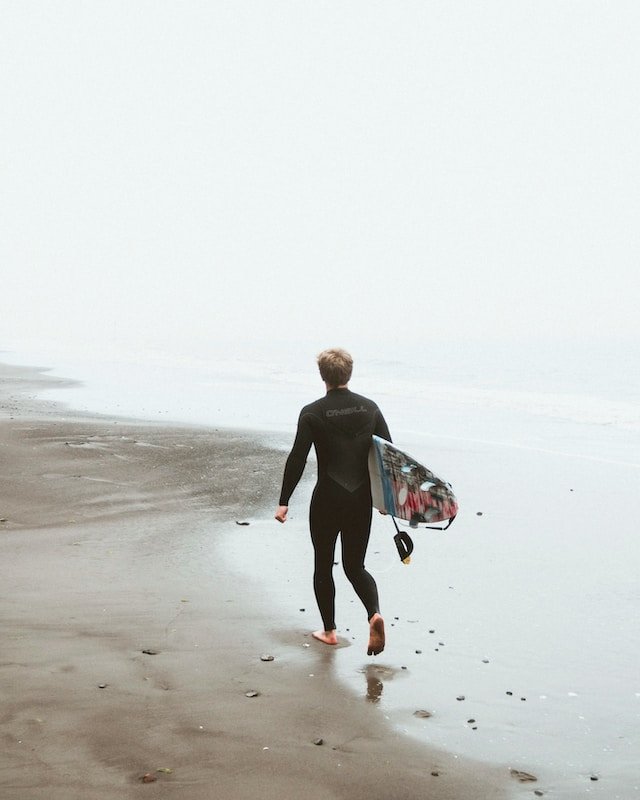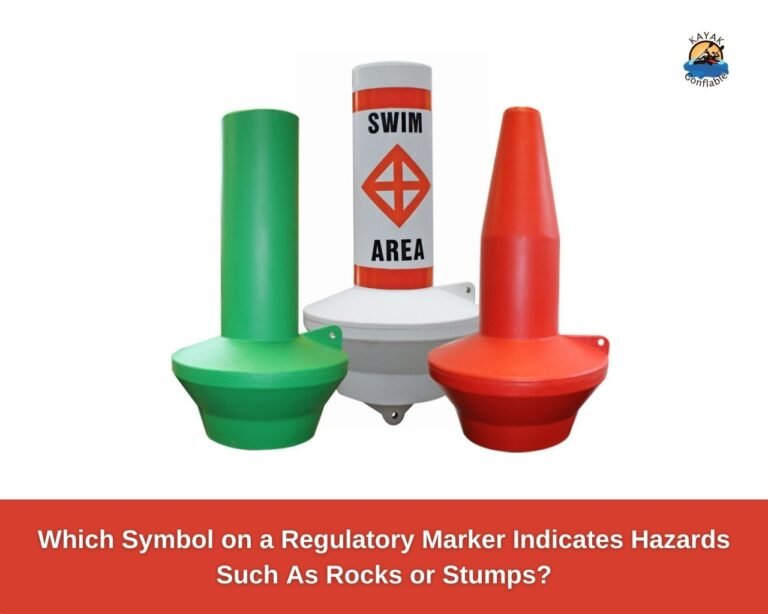¿Qué debes hacer para evitar chocar con otro barco?
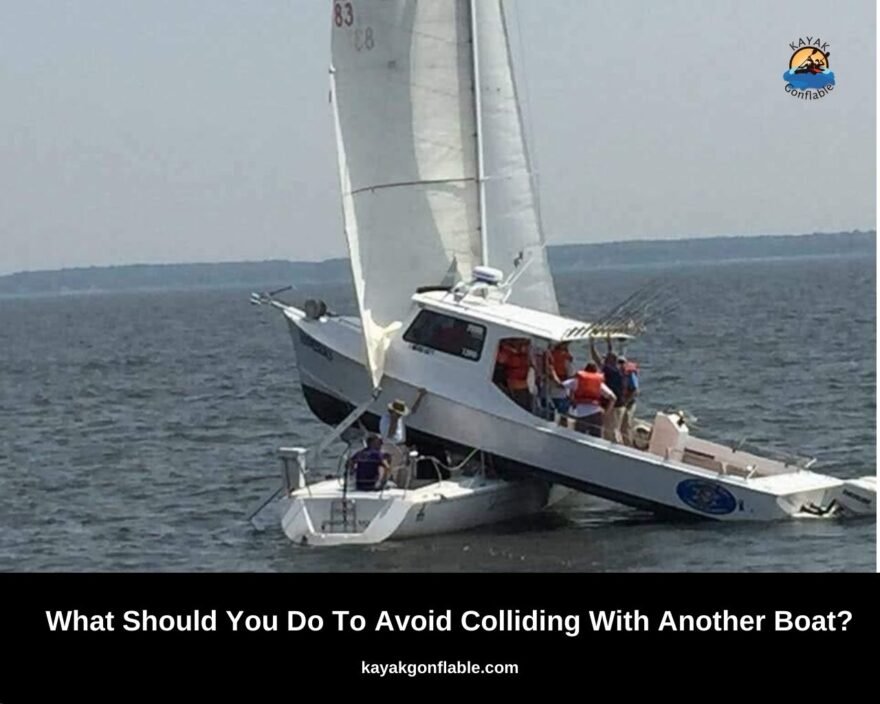
¿Qué debes hacer para evitar chocar con otra embarcación?
¿Qué son las colisiones de barcos?
Las colisiones de embarcaciones son una de las principales causas de muerte y lesiones en lagos y ríos. Ocurren cuando un barco choca con otro barco, objetos en el agua o en la orilla, o rocas.
Cuando los barcos chocan, pueden crear grandes olas que pueden volcar y ahogar a las personas, además de causar lesiones graves a los navegantes y graves daños a los barcos. Para evitar colisiones de embarcaciones, las autoridades utilizan radares para rastrear las embarcaciones y advertir a los conductores sobre posibles accidentes.
Todos los que se encuentren en el agua deben garantizar la seguridad de las embarcaciones y evitar colisiones. Cuando ocurren colisiones de embarcaciones, es importante saber qué hacer para evitar lesiones o algo peor.
Las colisiones de embarcaciones pueden ocurrir en cualquier momento, pero son más comunes durante las horas del día, cuando la visibilidad es mayor.
¿Cuáles son los peligros de las colisiones entre barcos?
Navegar en barco es una excelente manera de divertirse y alejarse del ajetreo y el bullicio de la vida cotidiana. Sin embargo, existe la posibilidad de sufrir daños graves si se ve involucrado en una colisión de embarcaciones.
Éstos son algunos de los peligros:
1. Cuando dos barcos chocan, el agua puede volverse extremadamente turbulenta y violenta.
2. Las colisiones de embarcaciones pueden causar lesiones importantes. Las lesiones varían en gravedad, pero pueden incluir heridas por vidrios rotos u otros objetos, lesiones de la médula espinal y ahogamiento.
3. La colisión puede provocar que barcos para volcar o incluso hundirse. Los barcos pueden quedar inutilizados en segundos, dejando a las personas varadas en el agua.
4. Las colisiones de embarcaciones pueden provocar la muerte de las víctimas.
Navegación en barco: Cómo evitar una colisión mientras navegas
Si navega en barco, es importante conocer las técnicas de navegación segura que pueden ayudar a evitar colisiones. A continuación se ofrecen algunos consejos que le ayudarán a evitar una colisión mientras navega:
1. Manténgase alerta mientras navega. Esté atento a los barcos en su vecindad y esté preparado para tomar medidas si es necesario. Tenga especial cuidado con las embarcaciones pequeñas, que pueden ser más difíciles de ver.
2. Utilice herramientas y procedimientos adecuados para la navegación en embarcaciones. Asegúrese de comprender las instrucciones y utilizarlas correctamente.
3. Esté atento a las condiciones climáticas. Si el el clima está malo, desacelerar. Y si está bien, acelera.
4. Mantenga su embarcación a la vista en todo momento. Cuando te acerques a otra embarcación, anuncia tu intención en voz alta y clara.
5. Asegúrese de que su barco apunte en la dirección en la que desea viajar.
6. Si descubre otro barco en peligro, no intente rescatar a la persona a menos que esté seguro de que es seguro.
7. No viaje demasiado cerca de otros navegantes. Mantenga al menos 100 pies de distancia de otras embarcaciones.
8. Asegúrese de mantener una velocidad segura. Viajar a una velocidad lenta de 5 nudos garantizará que sea menos probable encontrarse con condiciones peligrosas.
9. Si es posible, quédese con su embarcación cuando atraque o salga del agua.
10. Evite distracciones mientras navega, como teléfonos celulares y radios.
Posicionamiento del barco
Los navegantes deben colocar sus embarcaciones de manera que no se interpongan en el camino.
de los buques que se aproximan, para evitar colisiones. Los siguientes consejos pueden ayudar con el posicionamiento del barco:
• Mantenga un atraque amplio cuando viaje en la misma dirección que otra embarcación.
• Evite acercarse a 200 pies de otras embarcaciones.
• Coloque su embarcación de modo que quede mirando hacia adelante y a medio camino entre las embarcaciones, o al menos perpendicular a ellas.
• Al virar de un rumbo a otro, mantenga el lado de barlovento de su embarcación alejado de otras embarcaciones.
• Si su embarcación es más ancha que otras embarcaciones, colóquela de manera que la parte más ancha quede en la parte trasera y directamente en línea con la dirección de la marcha.
Señala tu presencia
Los navegantes han reconocido desde hace mucho tiempo la importancia de señalar a otras embarcaciones cuando se encuentran en el agua o cerca de ella. Esta práctica, llamada “showboating”, puede ayudar a evitar posibles colisiones.
Hay muchas formas diferentes de exhibirse, pero algunas señales comunes incluyen: hacer olas, usar las bocinas, usar banderas, silbatos y luces intermitentes.
Cada señal tiene su propósito y debe usarse en una situación específica para evitar provocar una colisión. Hacer alarde de otros navegantes suele ser inofensivo, pero cuando se trata de hacer alarde en el agua, puede ser peligroso.
Si alguien muestra su embarcación y provoca olas o luces intermitentes, es posible que otros navegantes no puedan ver su entorno y puedan resultar heridos, por lo que todo debe hacerse con moderación.
Hacer que otros navegantes se den cuenta de su presencia les permitirá saber que el espacio está ocupado y casi siempre evitará que se produzca una colisión.
Aprenda las reglas del camino
Las colisiones de embarcaciones son un problema grave en las vías fluviales. Al aprender las reglas de tránsito, los navegantes pueden ayudar a evitar estos accidentes.
Las reglas de tránsito incluyen saber dónde se encuentra en relación con otros barcos y embarcaciones, seguir las mismas leyes de tránsito que se aplican a los automóviles y estar atento a su entorno.
Obedecer estas reglas es especialmente imperativo cuando se viaja en espacios reducidos, como en un canal o en un puerto, donde es más probable que haya colisiones. Seguir estas reglas no sólo reducirá el riesgo de colisión sino que también ayudará a mantener las vías navegables seguras para todos los usuarios.
Utilice ayudas de navegación
Las ayudas a la navegación se utilizan ampliamente en los barcos para ayudar a evitar colisiones con otras embarcaciones. Las ayudas pueden incluir radiobalizas, luces intermitentes y señales sonoras.
Muchas ayudas a la navegación se activan automáticamente cuando un barco se encuentra dentro de un rango determinado de otro barco o tierra. La distancia del otro barco o tierra puede ser especificada por un piloto mediante una radio, una unidad GPS o mediante el uso de un radar.
Las ayudas a la navegación también pueden ser activadas manualmente por un operador a bordo de una embarcación. Sin embargo, no existe nada que pueda sustituir la buena navegación.
Las ayudas a la navegación sólo deben utilizarse cuando sea necesario y bajo la guía de un profesional calificado. Cuando se utilizan correctamente, las ayudas a la navegación pueden ayudar a reducir la posibilidad de una colisión.
Ten cuidado de tu entorno
Cuando se trata de evitar colisiones entre embarcaciones, ser consciente del entorno es clave. Si permanece atento y atento a otras embarcaciones, podrá evitar situaciones peligrosas. Aquí hay cinco consejos para ayudar a mantenerse seguro:
1. Mire a su alrededor antes de comenzar un viaje. Tómese el tiempo para escanear el horizonte y ver si hay barcos u otras embarcaciones en sus alrededores. De esta forma, podrás evitar iniciar una colisión sin siquiera saberlo.
2. Acérquese a otros barcos con cautela: es una buena idea moverse lenta y cuidadosamente al acercarse a otros barcos. De esta forma podrás evitar una colisión sin problemas.
3. No aceleres: es una buena idea ir relativamente despacio en el agua. De esta forma podrás evitar accidentes fácilmente ya que tendrás más tiempo para reaccionar.
4. Esté atento al clima: consulte el pronóstico del tiempo antes de comenzar su viaje y realice un seguimiento de cómo cambia el clima. Sabrás cuándo debes estar fuera del agua por mal tiempo así como qué velocidad exigen las condiciones actuales y así estar seguro.
Manténgase alejado de áreas congestionadas
Al navegar, es fundamental mantenerse alejado de las zonas congestionadas. Esto puede evitar colisiones entre barcos.
Las zonas congestionadas se pueden identificar por la presencia de una gran cantidad de embarcaciones de todos los tamaños, así como de grandes objetos o masas de agua en las proximidades.
Los navegantes siempre deben tener precaución al navegar por estas áreas y tomar las medidas adecuadas para evitar colisiones.
Puntos ciegos: qué son y cómo sortearlos
Al navegar o navegar, es fundamental ser consciente de su entorno y de los peligros potenciales que podrían acechar.
Desafortunadamente, muchas personas no tienen en cuenta el peligro que suponen los puntos ciegos en los barcos. Los puntos ciegos son áreas de un barco donde alguien no puede ver debido a obstáculos en su camino.
Los puntos ciegos pueden ser causados por una variedad de cosas, como objetos grandes en el agua o condiciones de niebla. Al navegar por estas áreas, es importante estar atento a las aguas y los peligros circundantes.
La buena noticia es que hay formas de navegar por estas áreas sin chocar contra algo. A continuación se ofrecen algunos consejos:
- Conozca su entorno. Si conoce bien el área, podrá navegar mejor por los puntos ciegos. Si no está familiarizado con el área, es importante utilizar puntos de referencia y otras herramientas de navegación para mantenerse seguro.
- Usa tu radar. Si tienes la opción de activar tu radar, es una excelente manera de realizar un seguimiento de otros vehículos y obstáculos en tu camino. Además, puede ayudarte a evitar accidentes de tráfico si tienes la oportunidad de reducir la velocidad.
- Utilice sus luces de navegación. Esto es especialmente importante cuando se navega de noche. Las luces de navegación le permiten ver a otros navegantes en la oscuridad o en condiciones de poca visibilidad, lo que le mantiene seguro en el agua.
Cómo mantenerse seguro mientras viaja a altas velocidades
Viajar a alta velocidad sobre el agua puede ser estimulante, pero también potencialmente peligroso. A continuación se ofrecen algunos consejos para mantenerse seguro mientras viaja a altas velocidades:
- Siempre usa un chaleco salvavidas al navegar. Si no puede usar un chaleco salvavidas, lleve uno a bordo en caso de emergencia.
- Manténgase alerta y consciente de su entorno. Esté atento a otros barcos y embarcaciones en su vecindad y esté preparado para tomar medidas inmediatas si es necesario.
- No conduzca demasiado rápido para las condiciones. Cuando las condiciones climáticas y del agua lo permitan, navegue a una velocidad más lenta para reducir la probabilidad de una colisión.
- Nunca uses auriculares mientras conduces un barco.
Consejos para adelantar a otros barcos de forma segura
Paso barcos Puede ser una habilidad difícil de aprender para cualquiera, pero es especialmente importante para quienes utilizan regularmente vías navegables interiores. Pasar barcos con seguridad requiere paciencia, buen juicio y un poco de práctica.
Al navegar, es importante recordar la regla fundamental del paso seguro: navegar siempre dentro de los límites de sus capacidades y las de su barco. A continuación se ofrecen algunos consejos para rebasar con seguridad:
- Mantenga una distancia segura con otras embarcaciones. Pasar demasiado cerca puede crear una situación peligrosa.
- Esté siempre atento a los obstáculos en el agua, como rocas, arrecifes y otras embarcaciones.
- Esté atento a los barcos en su punto ciego y no confíe exclusivamente en su estéreo o GPS para navegar.
- Tenga cuidado al atracar o cruzar un río. Esté atento al tráfico a ambos lados del río y dé suficiente espacio a otros barcos al atracar.
- Al acercarse o rebasar a otra embarcación en un muelle, asegúrese de seguir las instrucciones del operador del muelle.
- Si viaja en un bote y necesita cruzar un río, tómese el tiempo para verificar si hay obstáculos en el río más adelante.
- En caso de duda, ceda el paso al otro barco. Es mejor prevenir que curar.
Qué hacer si estás en una colisión
A veces los peligros ocurren a pesar de todos los esfuerzos por prevenirlos. Aunque es mejor prevenir que curar, la administración temprana de la cura es mejor que ninguna administración o incluso tardía. Si se ve involucrado en una colisión de embarcaciones, aquí tiene algunos consejos a seguir:
- Aléjate del barco lo más rápido posible. No
- intentar mover el barco; lo más probable es que sea peligroso hacerlo.
- Mantén la compostura y evalúa la situación.
- Compruebe si hay lesiones.
- Busque atención médica si es necesario.
- Reportar el incidente a las autoridades.
- Determinar la causa de la colisión.
- Manténgase alerta y esté atento a otras embarcaciones en la zona.
- Mantenga una distancia segura de otros barcos sin importar cuál sea la situación.
- Si es posible, averigüe si hay otros barcos involucrados en el incidente y si se encuentran bien.
- No mueva a una persona herida en la colisión hasta que llegue el personal de primeros auxilios.
- No se detenga para ayudar a nadie involucrado en una colisión de embarcaciones a menos que el personal de emergencia o los agentes del orden se lo soliciten.
- Pida ayuda activando su EPIRB (Radiobaliza indicadora de posición de emergencia).
Conocer la forma adecuada de evitar chocar con otro barco puede ayudarle a usted y a quienes le rodean a estar seguros en el agua.
Seguir los consejos proporcionados en este artículo puede ayudarle a estar atento a su entorno y tomar decisiones inteligentes mientras navega.
Tenga en cuenta que pueden ocurrir accidentes, así que esté siempre preparado para lo inesperado. Recuerda estar siempre atento mientras estés en el agua y ¡diviértete!
Preguntas frecuentes
¿Qué se espera de todo piloto de barco para evitar colisiones?
Para evitar colisiones, se espera que todos los operadores de barcos tomen precauciones específicas. Garantizar una vigilancia adecuada, mantener una distancia segura de otras embarcaciones, evitar cambios inesperados de velocidad o ruta y mantenerse alejado de obstrucciones son ejemplos de estas precauciones.
Al operar sus embarcaciones en varios tipos de vías navegables, los operadores de barcos también deben observar ciertas reglas.
¿Cuál es la mejor manera de evitar sobrecargar su embarcación (¿Cómo evita que su embarcación se sobrecargue?)
Overloading your boat with unnecessary equipment can cause it to break down. Below are some pointers to prevent overloading your boat:
- Asegúrate de tener en cuenta todo lo que necesitarás llevar contigo.
- Tenga en cuenta cuánto peso puede transportar su embarcación.
- Asegúrese de cargar solo los artículos que desea utilizar durante su viaje.
- Divida siempre su equipo entre muchos barcos o vehículos.
- Seleccionar el equipo adecuado para el trabajo.
- Se debe utilizar un sistema de distribución de peso para distribuir la carga uniformemente entre todos los componentes de la embarcación.
- Asegúrese de tener espacio adecuado para moverse de forma segura mientras carga y descarga.
¿Qué debes hacer si no quieres chocar con otra moto acuática?
Chocar con otra embarcación puede ser peligroso y causar daños graves e incluso muertes. A continuación se ofrecen algunos consejos que le ayudarán a evitar una colisión:
- Mantente consciente de tu entorno en todo momento. Esté siempre atento a otros barcos y no conduzca demasiado cerca de ellos.
- Utilice técnicas de navegación adecuadas cuando navegue, para saber dónde se encuentra y dónde están los demás barcos.
- Tenga cuidado al acercarse a otras embarcaciones.
- Adapte su velocidad y rumbo a las condiciones que prevalecen en ese momento.
- Comunicarse con otras embarcaciones utilizando dispositivos de señalización seguros.
- Involucre un objeto/barco en el radar para aumentar su conocimiento de su ubicación.
- Mantenga una velocidad lenta y adecuada al acercarse a otras embarcaciones.
- Al navegar por canales estrechos, proceder con precaución.
- Nunca asuma que otro barco le cederá el paso o no entrará en un canal.
¿Quién es responsable de evitar una colisión entre dos embarcaciones?
La respuesta no es tan sencilla como parece. Una colisión entre embarcaciones puede deberse a diversas causas, y ninguna persona u organización puede ser considerada enteramente responsable de evitarla.
Varias personas y organizaciones suelen ser responsables de evitar una colisión de embarcaciones, incluidos los capitanes de embarcaciones, los operadores de embarcaciones y los controladores de tráfico marítimo.
En la mayoría de las colisiones, es más probable que la culpa la tenga la embarcación que está en la posición equivocada en el momento equivocado.
Un barco pasa a otro. ¿Qué barco debe ceder?
En un río, determinar quién tiene el derecho de paso puede ser difícil y, por lo general, todo se reduce a qué barco es más grande. En la mayoría de los casos, el barco que adelanta al otro debe ceder el paso. Hay excepciones a esta regla y pueden basarse en una serie de circunstancias, incluido el trazado del río y el tamaño y forma de los barcos.
Un barco pasa a otro. ¿En qué barco debería pararse?
Cuando un barco pasa al otro, los navegantes se enfrentan con frecuencia a la difícil opción de en qué barco pararse. No hay una respuesta concluyente porque depende de varios aspectos como la velocidad, el tamaño y la carga.
Si el barco que adelanta es significativamente más rápido que el otro barco, normalmente es más seguro permanecer en la proa del barco más lento. Esto se debe a que la proa proporciona un área considerablemente más amplia para desviar el casco del barco y puede proteger el motor, el eje y la hélice del barco que adelanta.
Debido a que esta situación depende de una gran cantidad de variables en constante cambio, la decisión ideal puede variar según las circunstancias.
¿Quién está obligado a mantener una vigilancia adecuada mientras se navega?
La navegación es un pasatiempo popular que disfrutan personas de todas las edades. Los navegantes son responsables de su seguridad y deben permanecer alerta en todo momento.
Cada individuo a bordo de una embarcación debe ser responsable de vigilar para garantizar el bienestar de todos. Esto implica ser observador de lo que le rodea y mantener la vigilancia.
¿Qué debes hacer si estás manejando una lancha a motor y está siendo adelantada por un velero?
Si conduces una lancha a motor y te adelanta un velero, lo mejor que puedes hacer es mantener la distancia y dejar pasar al velero. Es posible que tengas que tomar medidas evasivas para evitar chocar con el velero si viaja más rápido que tú.
Si el velero viaja más lento que tú, intenta cambiar de rumbo o reducir la velocidad para mantener el ritmo. Si el velero está a menos de 10 pies de usted, es posible que desee usar la bocina o las luces intermitentes para intentar detenerlo.
Es posible que tengas que tomar medidas para defenderte o defender tu barco si el velero continúa acercándose.
Si están navegando un velero y un barco a motor, ¿cuándo es el barco de vela el que cede el paso?
El buque que cede el paso es el velero cuando está en marcha y el barco a motor cuando está parado. Esto se basa en la regla general de que un barco es el primero en entrar en un canal u otra zona restringida. Una lancha a motor no puede detenerse lo suficientemente rápido como para evitar un velero, por lo que es responsabilidad del velero cederle el paso.
Cuando un velero se acerca a un barco de motor, ¿cuál es el barco que cede el paso?
Cuando se navega cerca de un barco de motor, es fundamental recordar que el velero es el barco que cede el paso. Esto significa que el velero debe ceder el paso al barco de motor en todo momento, a menos que el barco de motor esté adelantando o pasando al velero.
Esto se debe a que el barco a motor tiene más potencia y potencialmente puede chocar contra el velero. Además, es menos probable que el velero tenga botes salvavidas y es posible que no pueda escapar si el barco a motor choca con él.
Si un velero viaja hacia un barco grande, como un crucero, es fundamental permanecer delante del barco más grande y no acercarse demasiado.
¿Por qué el operador de una embarcación debería mantener una vigilancia adecuada?
El operador de una embarcación siempre debe estar atento al operar una embarcación. Esto incluye estar atento al entorno y tomar medidas de precaución en caso de peligro.
Hay muchas razones por las que un operador de embarcaciones debe estar atento, algunas de las cuales incluyen las siguientes:
- Un vigía puede detectar rápidamente peligros potenciales, como vida silvestre u otras embarcaciones, que podrían provocar un accidente.
- Un vigía puede advertir a la tripulación de cualquier peligro potencial antes de que sea demasiado grave.
- Un vigía puede ayudar a identificar las condiciones climáticas que pueden afectar la seguridad de la embarcación.
- Un vigía puede ayudar a evitar colisiones con otros barcos, objetos submarinos o incluso rocas.
- Un vigía puede ayudar a la tripulación a vigilar el clima y mantener su posición.
Dos barcos navegan muy cerca. ¿Cuál es el barco que debe mantener su rumbo y velocidad?
Dos barcos navegan muy cerca. Un barco debe mantener el rumbo y mantener su ritmo, mientras que el otro barco puede seguir o desviarse de la ruta inicial siempre que no obstruya el movimiento de avance del primer barco. ¿Qué barco debe mantener su rumbo y velocidad?
La respuesta a esta cuestión es complicada porque depende de una serie de elementos, incluidos el tamaño y la velocidad del barco, la velocidad del viento y las corrientes. Sin embargo, en la mayoría de los casos, el barco que se mueve más lento debe mantener su dirección y velocidad.
Dos embarcaciones circulan por la misma región local. ¿Quién se encarga de evitar un accidente?
En la misma región aproximada navegan dos barcos. ¿Quién se encarga de prevenir una colisión? La respuesta es que evitar colisiones es responsabilidad de ambos buques.
La etapa inicial para cada capitán de embarcación es determinar si su embarcación está en el camino de la otra. Si cualquiera de los barcos se encuentra en el camino del otro, los pilotos deben responder rápidamente para evitar una colisión.
Sin embargo, la embarcación con mejor visibilidad tiene una mayor parte de culpa a la hora de evitar una colisión. Esto significa que evitar una colisión es responsabilidad del barco con mejor vista y rango de movimiento. La embarcación secundaria debe maniobrar para evitar bloquear el paso de la embarcación principal.
¿Qué debe hacer cuando opera en condiciones de visibilidad reducida?
Si está operando una embarcación en condiciones de visibilidad reducida, las siguientes pautas lo ayudarán a mantenerse seguro y evitar accidentes:
- Utilice siempre un chaleco salvavidas.
- Tenga siempre cuidado al operar su embarcación.
- Manténgase informado de las condiciones que le rodean utilizando el equipo adecuado, como un detector de radar o un trazador de mapas.
- No confíes únicamente en tu visión para navegar; utilizar sonido y otras ayudas a la navegación cuando sea necesario.
- Manténgase alejado de puentes, muelles y otras obstrucciones.
- Si puede ver otra embarcación en sus proximidades, tenga cuidado al acercarse a ella. Los navegantes siempre deben mantener una distancia segura y mantener sus embarcaciones bajo control en todo momento.
- Mantener su Motor en funcionamiento para ayudar a evitar colisiones con otras embarcaciones. y objetos en el agua.
- Asegúrese de que su embarcación esté equipada con una luz de marcha con luz blanca o roja y que esté en buenas condiciones. Ayudará a proporcionar iluminación.
¿Qué sucede si dos barcos se acercan de frente?
Dos barcos que se acercan de frente viajan a gran velocidad y están extremadamente cerca uno del otro. Si los barcos chocaran, se producirían daños masivos y posibles pérdidas de vidas. Pueden suceder varias cosas durante una colisión frontal, algunas de las cuales se enumeran a continuación.
- Los dos barcos podrían entrar en contacto entre sí, causando daños a ambos buques, que es el resultado más probable.
- Los barcos podrían cruzarse en direcciones opuestas.
- Un barco podría entrar en contacto con una roca y hundirse, mientras que el otro barco navega costa abajo.
- Los barcos podrían chocar de frente y explotar, llevándose consigo a las tripulaciones de ambos barcos.
¿Qué debe hacer al acercarse a otro barco de frente?
Siempre verifique que tiene el derecho de paso cuando se acerque de frente a otra embarcación.
- Mantenga una distancia segura de su proa y popa.
- Mantenga una conducta tranquila y evite hacer movimientos bruscos.
- Asegúrese de que su embarcación esté en buen estado de funcionamiento.
- Tenga cuidado con la velocidad y los movimientos de la otra embarcación y evite chocar con ella si es posible.
- Esté alerta a otras embarcaciones en la zona.
- Tenga cuidado con las embarcaciones con motores enormes y ángulos de casco severos; pueden ser más difíciles de detener.
- Si te sientes inseguro, ajusta tu ruta o aléjate de los otros barcos.
¿Qué se debe hacer para evitar chocar con una embarcación de pie?
Al atracar o amarrar su barco, asegúrese de estar atento a muelles flotantes y otros buques. Si te acercas a una embarcación de pie desde un costado, gira hacia ella para no chocar.
Si te acercas por detrás, aprovecha la estela y acércate a una velocidad más lenta. Y si está atracando frente a una embarcación de pie, manténgase alejado del borde.
¿Por qué lado pasas a otros barcos?
Todos los días, las personas en los barcos deben decidir por qué lado pasarán a otros barcos. Esta decisión puede resultar difícil, especialmente cuando los barcos están muy juntos.
Algunas personas optan por pasar a la izquierda porque este lado suele estar menos transitado. Otros prefieren adelantar por la derecha porque es más seguro.
No hay una respuesta correcta, pero saber qué lado es más seguro para usted es importante al navegar por las vías fluviales.

